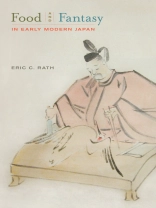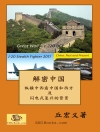How did one dine with a shogun? Or make solid gold soup, sculpt with a fish, or turn seaweed into a symbol of happiness? In this fresh look at Japanese culinary history, Eric C. Rath delves into the writings of medieval and early modern Japanese chefs to answer these and other provocative questions, and to trace the development of Japanese cuisine from 1400 to 1868. Rath shows how medieval ‘fantasy food’ rituals—where food was revered as symbol rather than consumed—were continued by early modern writers. The book offers the first extensive introduction to Japanese cookbooks, recipe collections, and gastronomic writings of the period and traces the origins of dishes like tempura, sushi, and sashimi while documenting Japanese cooking styles and dining customs.
Daftar Isi
List of Illustrations and Tables
Acknowledgments
Introduction
1. Japanese Cuisine, a Backward Journey
2. Of Knives and Men: Cutting Ceremonies and Cuisine
3. Ceremonial Banquets
4. The Barbarians’ Cookbook
5. Food and Fantasy in Culinary Books
6. Menus for the Imagination
7. Deep Thought Wheat Gluten and Other Fantasy Foods
Conclusion: After the Fantasies
Appendix: The Southern Barbarians’ Cookbook (Nanban ryorisho)
Notes
Bibliography
Index
Tentang Penulis
Eric C. Rath is Associate Professor of Japanese History at the University of Kansas and the author of The Ethos of Noh: Actors and their Art.












